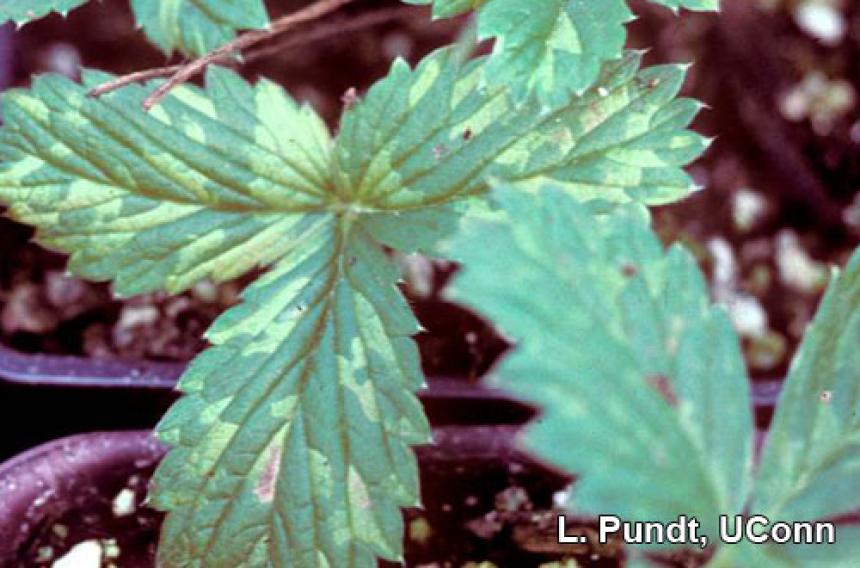Symptoms occur on the top of the foliage as yellowing and necrosis often in angular lesions as if the plants are nitrogen or nutrient deficient. The underside of the leaves appear "dirty" due to the growth of sporangia, the distributive form of the fungus. Downy mildew is in the same family as Phytophthora and Pythium.
High humidity, prolonged leaf wetness, and cool weather favor the development of downy mildew diseases. Once infection is established, sporangiophores emerge from the stomata on leaf undersides and sporangia are easily spread by splashing water, wind, or handling. Downy mildew fungi may reside in plant debris or weeds hosts. Remove infected plants and weeds. Avoid prolonged periods of leaf wetness. Few fungicides are registered for use on culinary herbs.
Symptoms appear as a light gray colored, fluffy growth on the underside of leaves. The discolored foliage on the upper leaf surface could be confused with a nutritional deficiency. Downy mildew symptoms appear very rapidly and tend to be much more difficult to control than powdery mildew. Conditions that promote leaf wetness, such as high relative humidity, overhead irrigation and close spacing, favor this disease. With a hand lens, closely examine the bloom of sporangia (microscopic stalks bearing spores) on the underside of the oldest leaves. (They will look like many tiny branched trees, each bearing tiny lemons). This can help you distinguish downy mildew from powdery mildew. Downy mildew sporulation also tends to occur on the underside of the leaves, whereas powdery mildew can occur on either the upper or lower surface.
Other greenhouse crops that may be prone to downy mildew include snapdragon, salvia, alyssum, pansy, rose, rosemary, sage coleus and ornamental cabbage. Perennials susceptible to downy mildew include aster, coreopsis, geranium, geum, lamium, potentilla, veronica and viola.
Fact Sheet: Downy Mildew Diseases of Ornamental Plants
